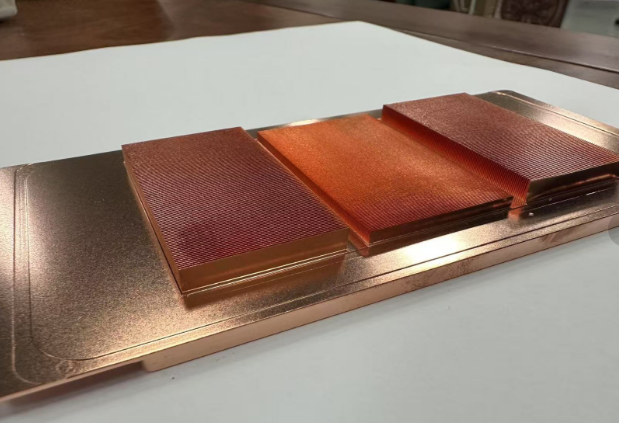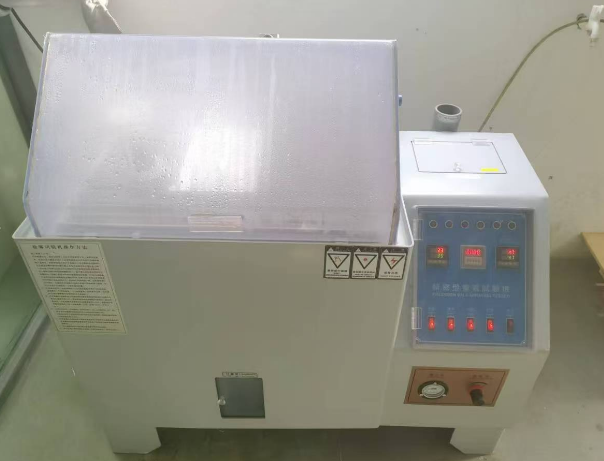Cold forged heatsinks are heatsinks manufactured through the cold forging process, widely used in electronic devices, LED lighting, automotive industries, Application of Liquid Cooled Plate Microchannel in IGBT and more. Their unique manufacturing process and material properties provide excellent heat dissipation and structural strength. This article will focus on the different characteristics and parameters of cold forged heatsinks made from aluminum and copper materials.Cold forging is a manufacturing method that plastically deforms metal billets into desired shapes through high-pressure compression at room temperature. This process can significantly enhance the density and strength of the material while maintaining good surface quality. Cold forged heatsinks typically use aluminum and copper, which have distinct differences in thermal conductivity, density, machinability, and other properties.

Aluminum Cold Forged Heatsinks
Aluminum is widely used in cold forged heatsinks due to its excellent overall performance. Here are some key characteristics and parameters of aluminum:
- Thermal Conductivity Aluminum has a thermal conductivity of approximately 205 W/m·K. Although it is not as conductive as copper, it is still sufficient for effective heat dissipation in many applications. The heat dissipation efficiency of aluminum heatsinks can be improved by optimizing the design, such as increasing the number of fins and optimizing the heat dissipation structure.
- Density Aluminum has a density of about 2.7 g/cm³, making it much lighter than copper. This gives aluminum heatsinks a significant advantage in applications requiring lightweight materials, such as aerospace and portable electronic devices.
- Machinability Aluminum has good plasticity and machinability. The cold forging process can easily shape aluminum into complex heatsink designs while maintaining high precision and good surface quality. Additionally, aluminum is less likely to crack or develop other defects during cold forging.
- Cost Aluminum is relatively inexpensive, making aluminum heatsinks cost-effective and suitable for large-scale production and application.

Copper Cold Forged Heatsinks
Copper heatsinks are indispensable in applications requiring extremely high thermal performance. Here are some key characteristics and parameters of copper:
- Thermal Conductivity Copper has a thermal conductivity of 398 W/m·K, roughly twice that of aluminum. Thus, copper heatsinks excel in high heat flux and high-power equipment, efficiently transferring and dissipating heat.
- Density Copper has a density of 8.96 g/cm³, significantly heavier than aluminum. While this can be a disadvantage in weight-sensitive applications, it is usually not a primary concern in fixed industrial equipment and high-performance electronic devices.
- Machinability Although copper has lower plasticity in cold forging, optimizing process parameters and using appropriate lubricants can effectively shape it into complex heatsink designs. Additionally, the hardness and strength of copper increase during cold forging, enhancing the durability and stability of the heatsink.
- Cost Copper is more expensive, resulting in higher costs for copper heatsinks. However, for certain high-performance applications, the superior thermal performance and reliability of copper make it a worthwhile investment.

Conclusion
Cold forged heatsinks play a vital role in modern industries and electronic devices. Both aluminum and copper have their unique advantages and applicable scenarios. Aluminum, with its good overall performance, lightweight nature, and low cost, is widely used in various heat dissipation applications. Copper, with its excellent thermal conductivity, is unrivaled in high-performance and high-heat flux applications.In practical applications, selecting the appropriate material and optimizing the design can maximize the advantages of cold forged heatsinks, improving the reliability and lifespan of the equipment. In the future, with continuous advancements in material science and processing technology, the performance and application prospects of cold forged heatsinks will be even broader.



